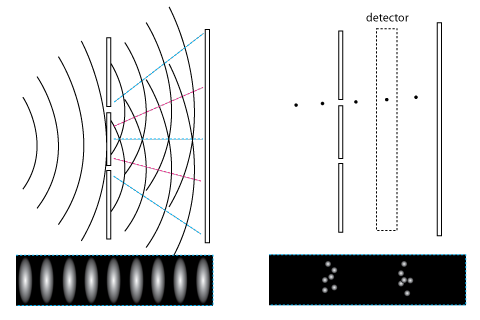I've seen a documentary, whose name I don't remember but I'm curious because it suggests that subatomic particles are able to "foresee the future".
I'll try to describe it here:
Some particles are shot through two slits in a plate, if the particles are not interfered by trying to measure its trajectory, they form an interference pattern on a wall where the beam is being projected, otherwise they just hit the wall in a single point according to the measured trajectory.
The following image depicts what is described above:

The dotted red lines are where waves are canceled, blue ones are where waves overlap.
Then, they modify the experiment, so that they sort of turn on the detector after the particles have crossed the slit, where particles have allready being "forced" to behave as waves or single particles, to see if they change its behaviour after the measurement, just to find that the particles were measured as if they always knew that they would be measured, and they crossed the slit as particles and not waves.
Update:
This is the link to the documentary, it's titled "Microscopic Universe", is part of this TV series. They describe the experiment about 17 minutes in.

